"Russian Verdun". Carpathian 1915 operation. Part of 1. Battle of the passes
In the Carpathians
The Carpathian operation combines a set of hostilities, originally offensive for the Russian troops (during the breakout planned by the Stake on the Hungarian plain), and later on within the oncoming battle (when the Austro-Germans, trying to reach out to Russian troops in Poland and unlock the fortress of Przemysl, went on the offensive).
At the approaches to the Carpathians, fighting broke out in the fall of 1914 in September (All dates, except those shown on the Austro-German photos and map - old style) to cover the Lvov direction and the siege of the Przemysl fortress, the Galician group of troops was created as part of the 8 and 3 armies of the Southwestern Front, a group of cavalry general N. F. von Krusenstern and the siege detachment of Lieutenant General D. G. Shcherbacheva .
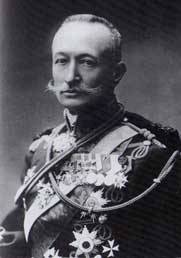
commander of the 8 Army, cavalry general A. A. Brusilov
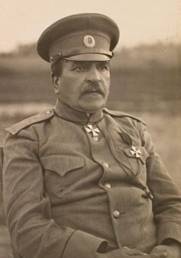
3 Army Commander General of Infantry R. D. Radko-Dmitriev
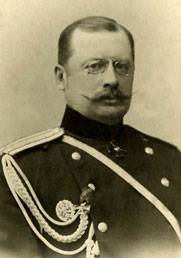
commander of 18 Army Corps, cavalry general N. F. Kruzenshtern
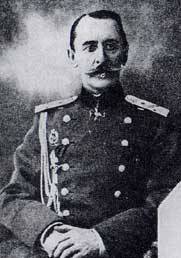
Commander of the 9 Army Corps, Lieutenant-General D. G. Shcherbachev
The rains and sprawling communications complicated the actions of the Russian troops, and the fact that the field armies were tied to the fortress became an undoubted mistake of the front command. Historian and war veteran A.M. Zayonchkovsky, noting the difficult situation of the Galician group, fixed 3 with the tasks entrusted to it: to hold Galicia and provide a communication line to Lviv, block Przemysl and assist the troops operating against Krakow. This is due to the lack of troops included in it - and the group did not have enough strength to perform all these tasks (Zayonchkovsky A.M. World War. The agile period of the 1914-1915 war in the Russian (European) theater. M.-L., 1929. C. 216.).
The powerful garrison of the Przemysl fortress, supported by strong artillery, hung over the flank of the 8 Army. This predetermined the assault of Przemysl. In addition, the commander of the Galicia group A. A. Brusilov decided that the fall of the fortress would give him back the freedom of action (Strategic essay on the 1914 war - 1918's. CH 2. M., 1923. C. 79). The assault was scheduled for September 24. It did not succeed, but there was no time for repetition - the enemy's field troops were approaching. Specialists in the field of fortification noted the weakness of the assault artillery preparation as the main reason for the failure - if the Russians had as strong siege artillery as the Germans, the fortress would hardly have lasted a long time (Yakovlev V.V. The history of fortresses. The evolution of long-term fortification. St. Petersburg, 1995. C. 264.). Due to large losses (about 10000 people - Cherkasov P. Sturm of Przemysl on October 7 (September 24). 1914 L - M., 1927. C. 128.) on the night of September 25, the siege was lifted.
Just at the end of September, the troops of the South-Western Front for the first time reached the eastern Carpathians. On the day of the assault of Przemysl, September 24, the battle for Uzhok pass broke out. An eyewitness recalled 3 perfectly prepared Austrian positions on the pass, several tiers of trenches, communications and an elaborate system of organizing fire. The batteries were masked and could lead both longitudinal and flank fire. At the edge of the forest (flank of the rear position) there was a notch. Russian units with the help of a bypass maneuver and flank fire forced the enemy to leave the front position - he moved to the main one. Austrian howitzers led a successful confrontation with the Russian batteries, but the flank bayonet strike of the Russian infantry led to the enemy retreating to the rear position. And by the 18 clock, hit by fire from the front and one flank, bypassed from the other flank, the enemy could not stand the hellfire and attacks, and retreated (Russian conquest of eastern Galicia. M., 1914. C. 58.).
September 28 Austrian 2-I and 3-I armies attacked the Russian 8-I army at the front Hyrov - Stry. The compounds of the last 11 days withstood the constant pressure of the enemy. On October 11, an enemy bypass maneuver put the Russians in a critical position. But Stryi’s oncoming round of the 24 Army Corps (the 4 Infantry Brigade distinguished itself) saved the day.
22 October, the enemy began to withdraw. In the Hyrovsky battle, the 8 Army captured up to 15000 prisoners, 22 guns and 40 machine guns.
In the autumn of 1914, in the foothills of the Carpathians, the 8 Army of the General A. A. Brusilov’s cavalry and the 9 Army of the General of Infantry P. A. Lechitsky (originally the 30 Army’s last corps) operated. Their opponent is the Austro-Hungarian 3 Army General of the Infantry S. Boroevich von Boin, the South German Army General of the Infantry A. von Linsingen, and then the German Besky Corps of the General of the Cavalry G. von der Marwitz.
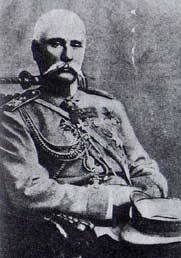
Commander of the Russian 9 Army General of Infantry P. A. Lechitsky
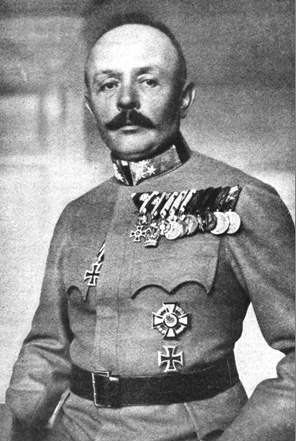
commander of the Austrian 3 Army, General of the Infantry S. Boroevich von Boin
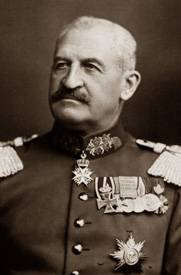
Commander of the South German Army, General of the Infantry A. von Linsingen
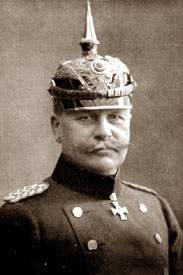
German cavalry general G. von der Marwitz, commander of the German Beskyd corps
At the beginning of November, during the Czestochowa-Krakow operation, the Beskydy battle unfolded. November 6 The 12 Army Corps took possession of the Dukla. The army of infantry general S. Boroevich von Boyne rejected the Beskyd positions. Finally, on November 10, the Russians captured the strategically important Lupkovsky Pass.
The Russians were at the entrance to the Hungarian Plain, and this fact could mean a quick exit from the war of Austria-Hungary and, therefore, a turning point in world war.
The fighting differed tenacity and bitterness. Moreover, the Russian troops were obliged to spend the minimum number of shells and cartridges - there came a time of crisis in the supply of ammunition. But Russian troops, step by step, knocked out the enemy from one peak to another — each peak was strengthened in the strongest way (3-4-tier defense), and the Magyars defended the way to the Hungarian Plain with terrible persistenceBrusilov A. A. My memories. M., 1983. C. 113.). The situation was aggravated by the fact that the enemy had superior strength in front of each Russian group and, using mountain and heavy artillery, combining attacks from the front with deep flanking rounds, acted as efficiently as possible. Often there were cases of wire barriers in the rear of the detachments, shelling of carts and going to the divisional headquarters. The mountainous wooded area made it difficult to control the troops (constantly reflecting the violent attacks of the enemy), and it was difficult to find positions for field artillery (Strategic sketch of the 1914-1918 war. CH 3. M., 1922. C. 18-19.).
8-I army began to descend on the Hungarian plain, occupied Mezo Laborch and Humennoe - but the subsequent attack was stopped by the Bids directive.
With the beginning of the November Limanovsky battle, the 3 corps (2 and 8) of the Russian 24 army advanced to the aid of the Russian 8 army. Only the 12 Army Corps remained on the Beskids - and the Austro-Hungarian 3 Army, supported by cavalry general K. Pflanzer-Baltin, dropped the 12 Corps from Beskids. In the battle of Krosno - Rimanov the enemy almost broke through the front of the army, leaving her to the rear.
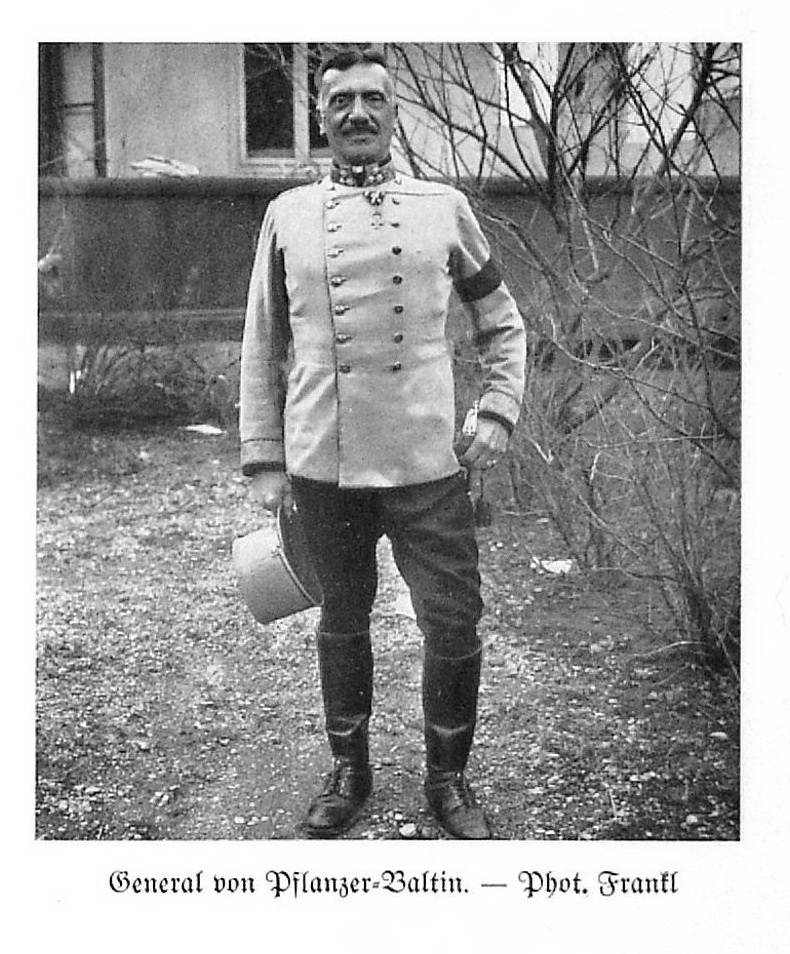
commander of the Austrian army group cavalry general K. Pflanzer-Baltin
The 8 Army was reinforced by a number of corps and counterattacked — as a result, on December 8, the defeated Austro-Hungarian 3 and 4 armies began to withdraw. Only 24 Army Corps in the period of November 13 - December 1 captured: General, 149 officers, more 12000 soldiers, 12 guns, 15 machine guns, 14 locomotives and 330 cars (Lesevitsky N. The First Campaign of the 24 Army Corps to Hungary in November 1914 / / War and Revolution. 1928. Prince 12. C. 114.).
War in the Carpathians
The “rubber war” in the Carpathians, connected with the constant attacks and retreats, came, according to the apt expression of the Austrians.
By 1915, the situation has escalated. Historian H. Ritter noted: “The Allies' Southern Strategic Front (German-Austrians - A. O.) in Hungary threatened to breakat" (Ritter H. Criticism of World War. PG.1923. C. 117.).
The most large-scale battles took place in January - March 1915. Accordingly, the following periods are distinguished.
1. From the beginning of January - the advance of the southern armies of the South-Western Front.
2. From January 7, the counter battle of the 8 Army with the enemy grouping and the Russian counteroffensive.
3. Since March 1, the general assault of the Carpathians by the troops of the South-Western Front.
The main strike task in the Carpathian battle was assigned to the 8 Army (6 divisions), subsequently reinforced by the 5 Division of the 11 Army. However, the strength of the Russian group, especially in terms of supply of ammunition, left much to be desired.
The Germans sent to the Carpathians to help their ally to 100 thousand soldiers. This is evidenced by the materials of the German Reichsarkhiv, calling them a significant reinforcement for the 45-ti Austrian infantry divisions (Reichsarchiv. Der Weltkrieg 1914 - 1918. Bd 7. Berlin, 1931. S. 142.). So, already in January, the 33-I and 37-I infantry divisions of the Kaiser Army were operating on the Carpathian front (Ebd. S. 133.).
German troops in the Carpathians
Nevertheless, as the quartermaster-general of the German Eastern Front, Colonel M. Hoffmann, wrote, the German troops who arrived in the Carpathians were not able to significantly influence the situation - they only helped to preserve the front (Hoffman M. The war of missed opportunities. M.-L., 1925. C. 80.).
The adversary assigned a special role to A. Carlos Von Linzingin, specially formed for participation in the Carpathian operation, mainly from the German units of the Eastern Front of the South German Army, and the most preserved Austrian troops entered S. Boroevich von Boine’s 3 army - these operational forces and became the main striking force Austro-Germans.
At the first stage of the operation, the sluggish Russian offensive was hampered by the abundant snowfall of the highland theater of operations. There were cases when Russian troops attacked "during 25-degree frost and blizzard" (Borisov A.D. Carpathian Operation // Army and Revolution. 1940. No. 3. C. 109.).
The main strike force of the Austro-Germans advancing from 7 in January - the South German army of A. von Linzingen (5 divisions) - acted against the Russian 8 army. The German Besky corps of the cavalry general G. von der Marwitz (3 divisions) attacked and supported the Austro-Hungarian 4 army. Temporarily Russian Uzhok pass was left. There was a breakthrough by A. von Linsingen’s troops on Stryi, but the Germans were stopped.
12 January, the enemy offensive was stopped. The Russians launched a counterattack by 24, 12, and 8 army corps. E. Falkenhayn noted that the Austro-Germans again had to fight off the Russian counter-attacks (E. Falkengain. The High Command 1914-1916 in its most important decisions. M., 1923. C. 64.). The troops of A. A. Brusilov on January 23 captured Meso Laborch. The 12 Corps of January 26 again captured the Lupkov Pass - the key to the Hungarian Plain.
The stake strengthened the shock grouping on the 2 Corps (17 of the 9 Army, 11 of the 3 Army).
20 February Austro - Germans counterattacked (on the front of the 8 and 7 of the army corps), having the main task of the de-blockade of Przemysl, living out the last days. The 8 divisions of the 8 Army recaptured the onslaught of the Austro-German 19 with heavy losses for the last, repeatedly turning into counterattacks.
In total, during this period, the Russian 8 Army took about 48 thousand prisoners, 17 guns and 119 machine guns. The most significant was the victory in the battle of Baligrod - Liski, when the enemy’s attempt to unlock Przemysl was foiled (about 30 of thousands of prisoners and 10 guns were captured).
The ending should ...
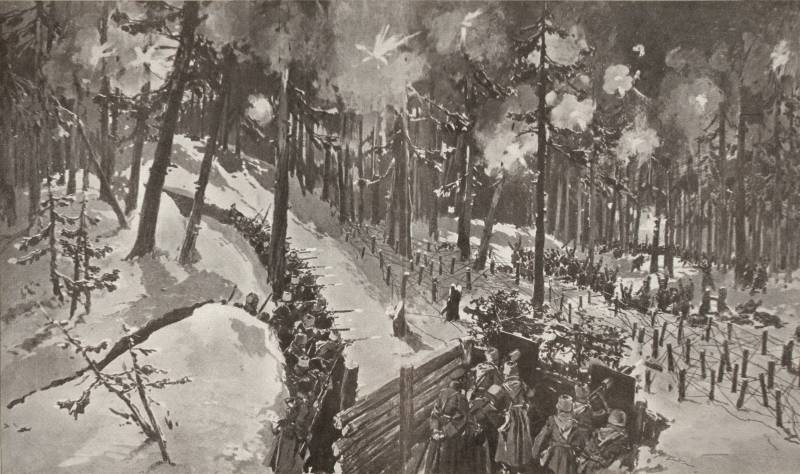
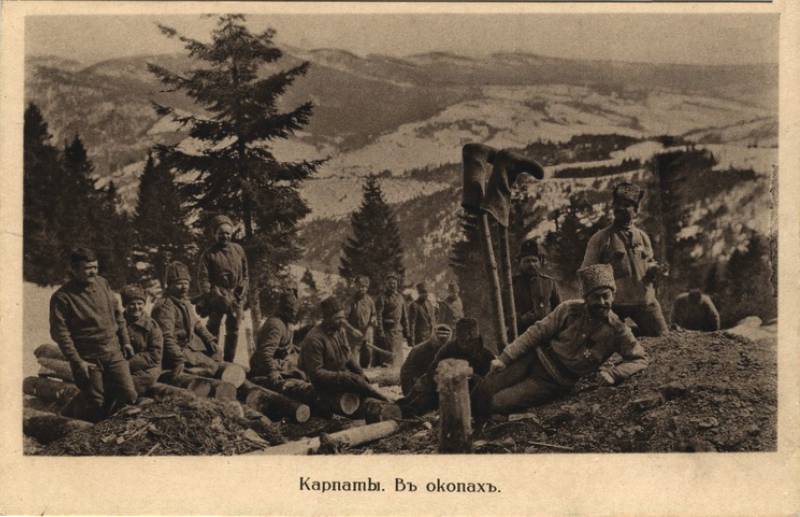
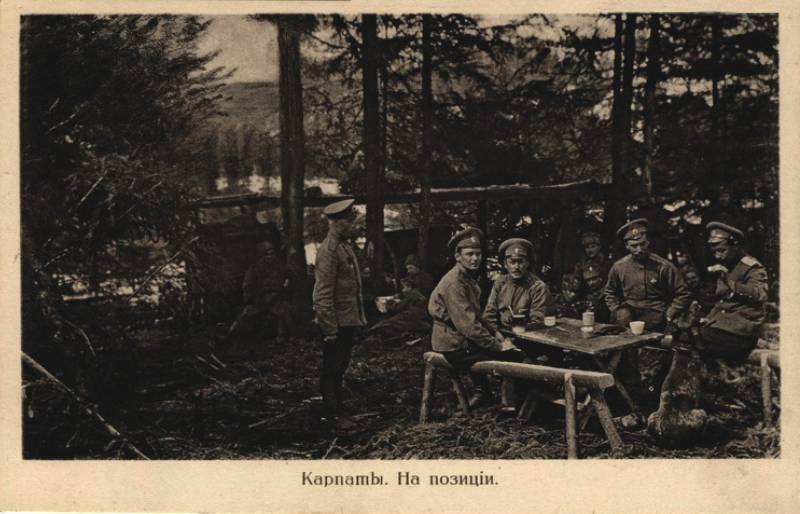
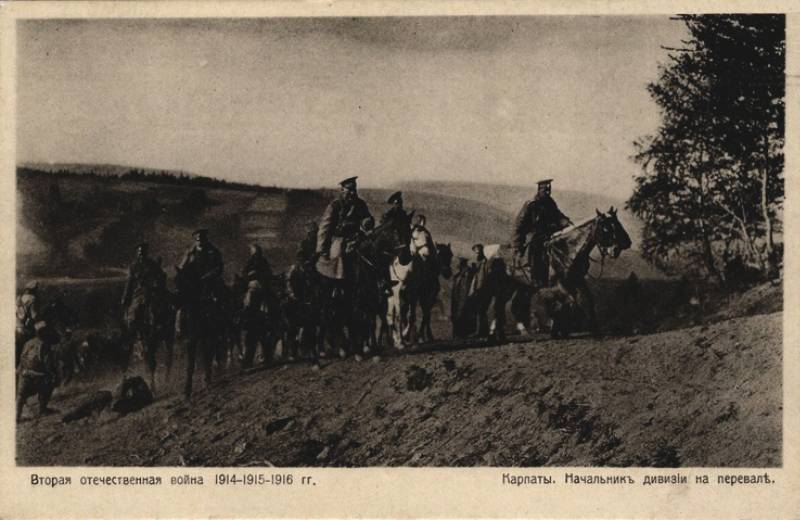
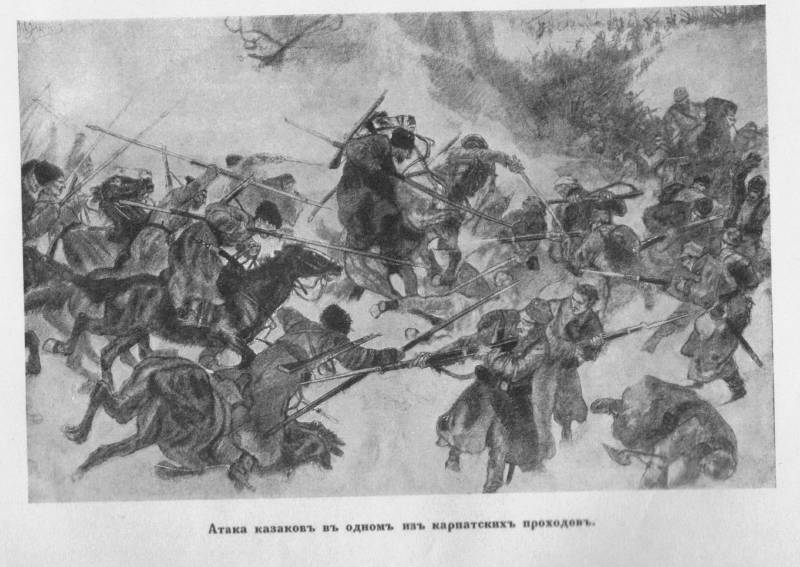
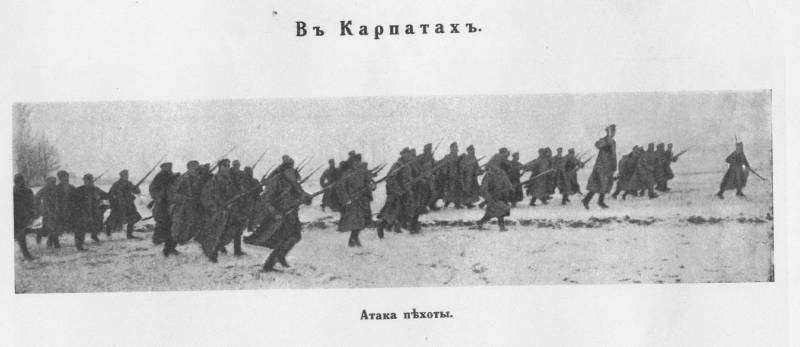
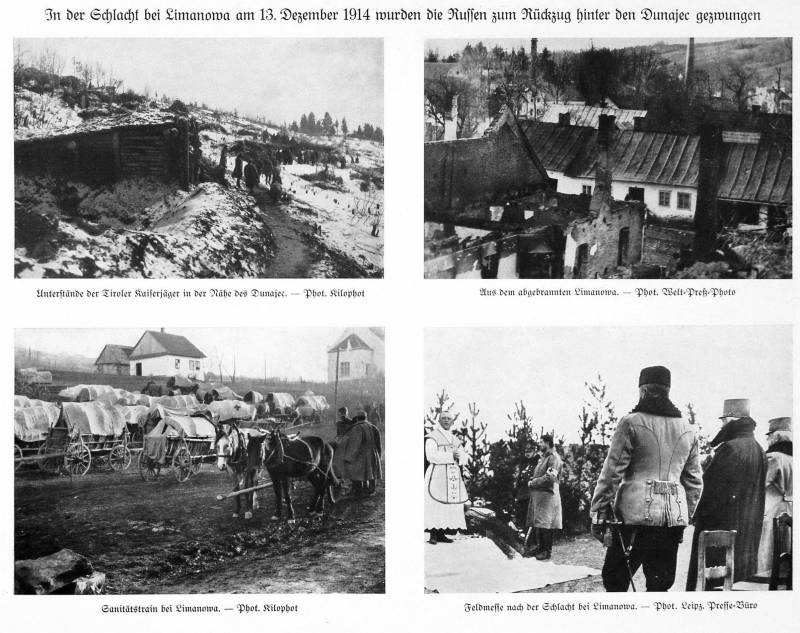
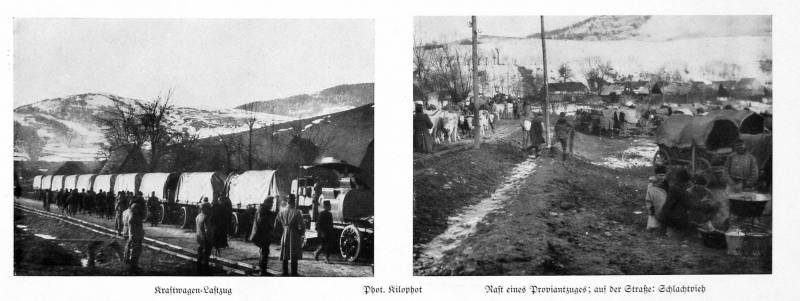
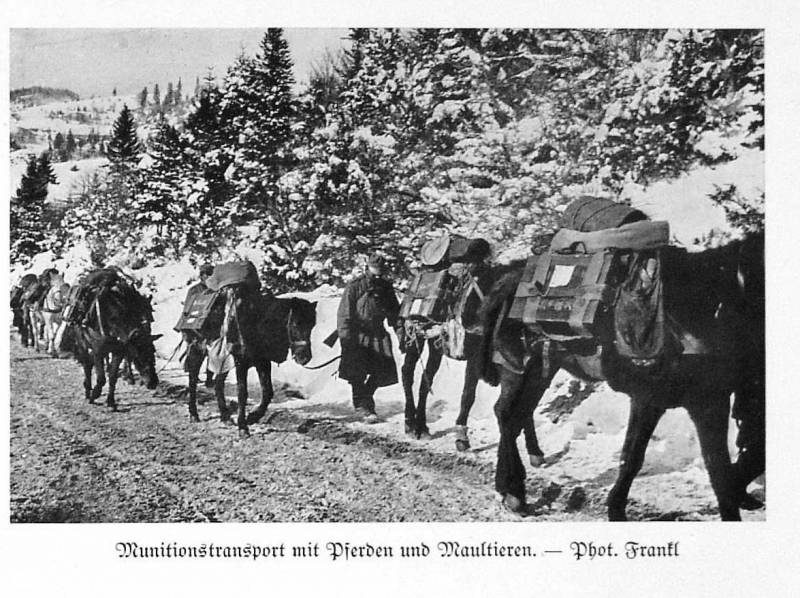
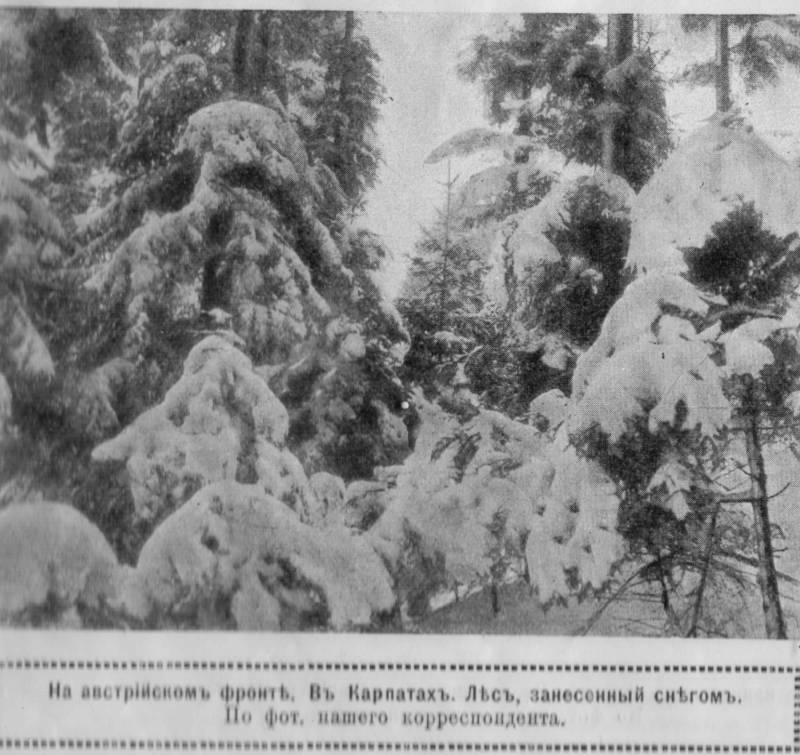
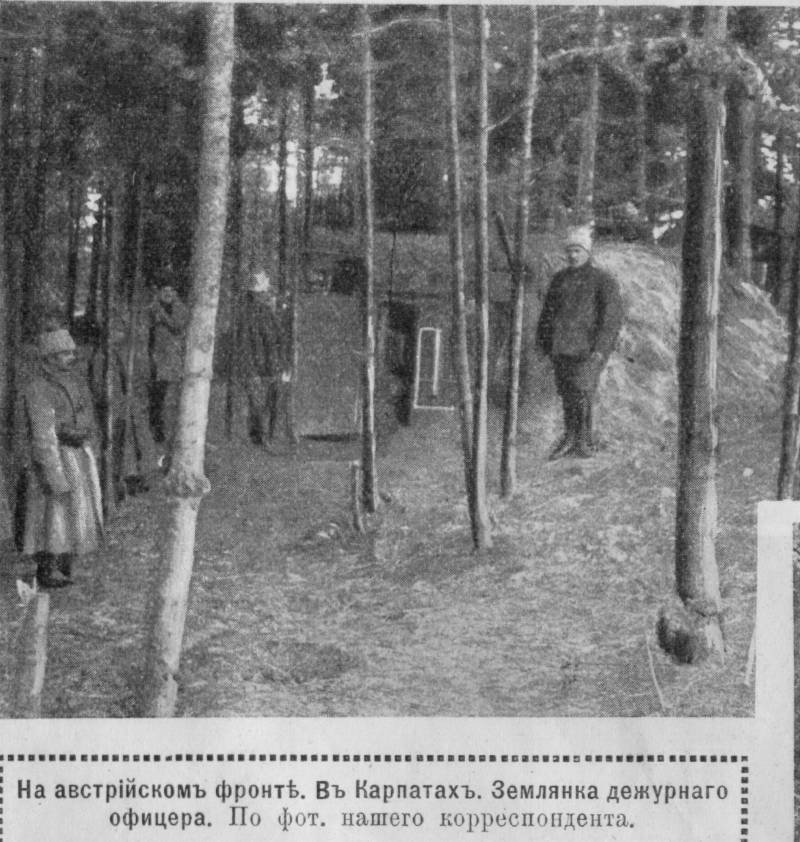
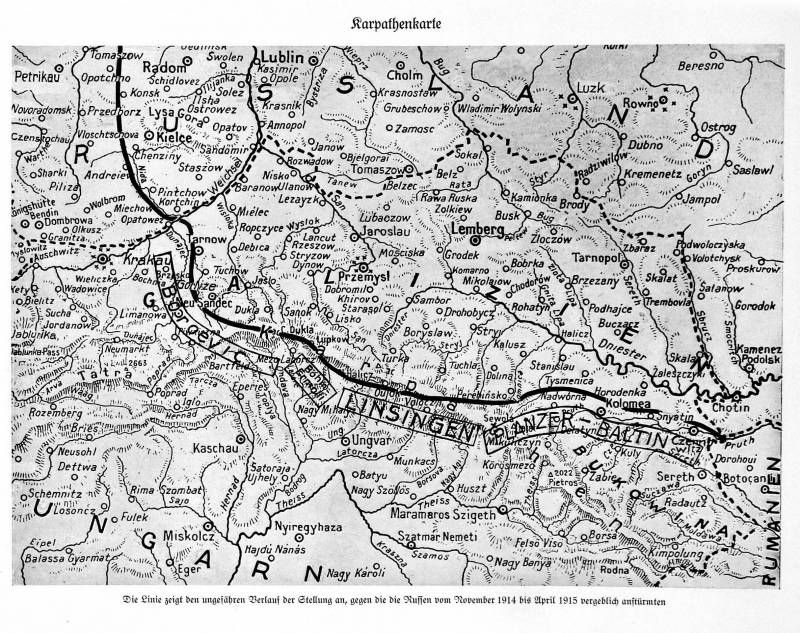
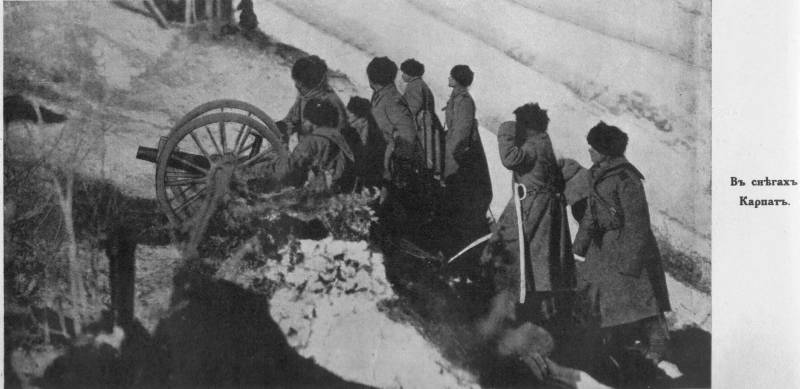
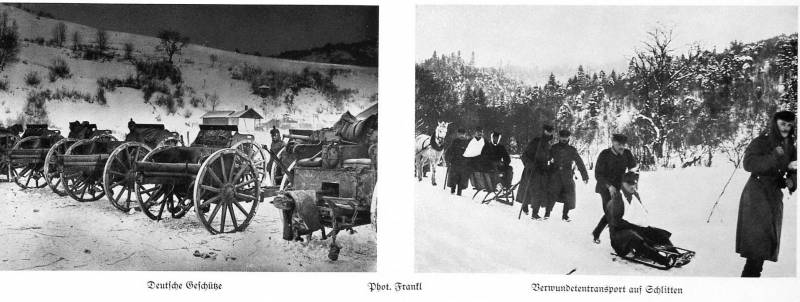
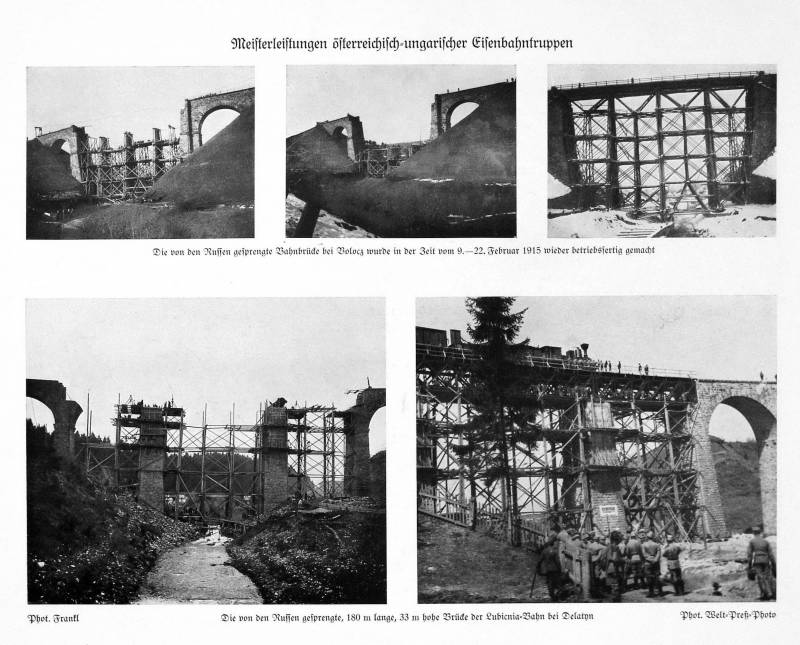
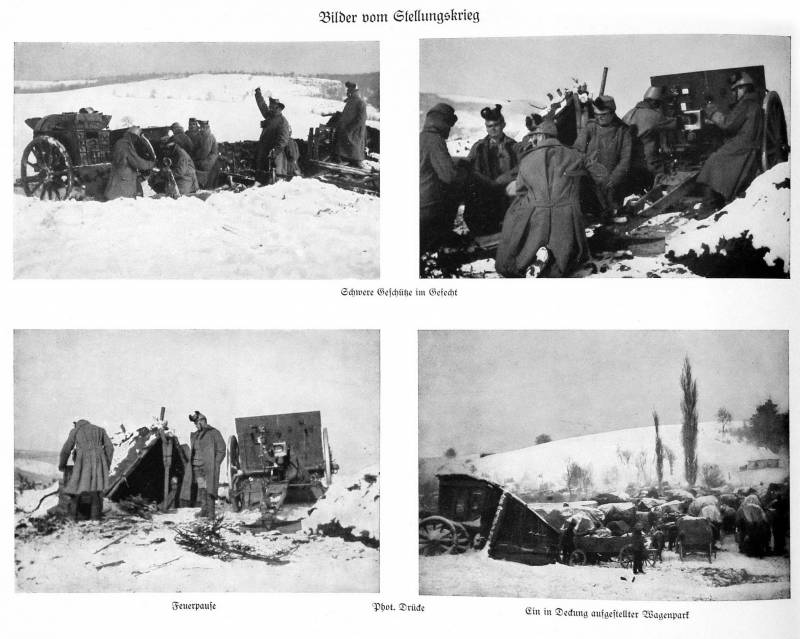
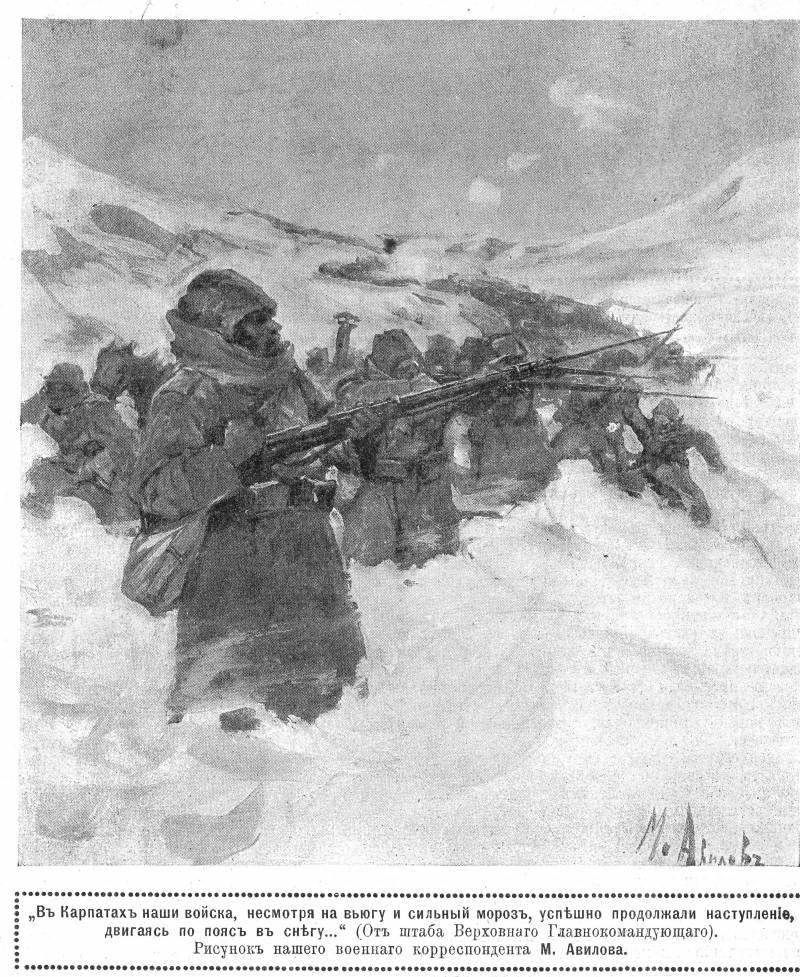
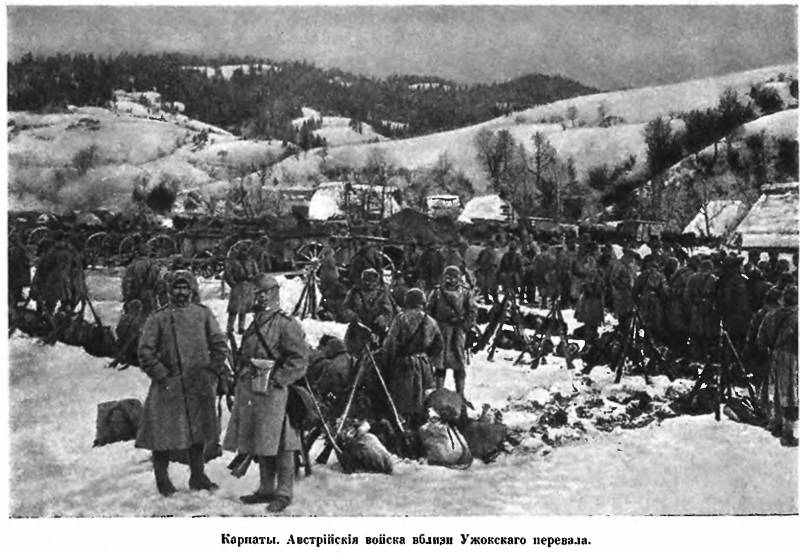
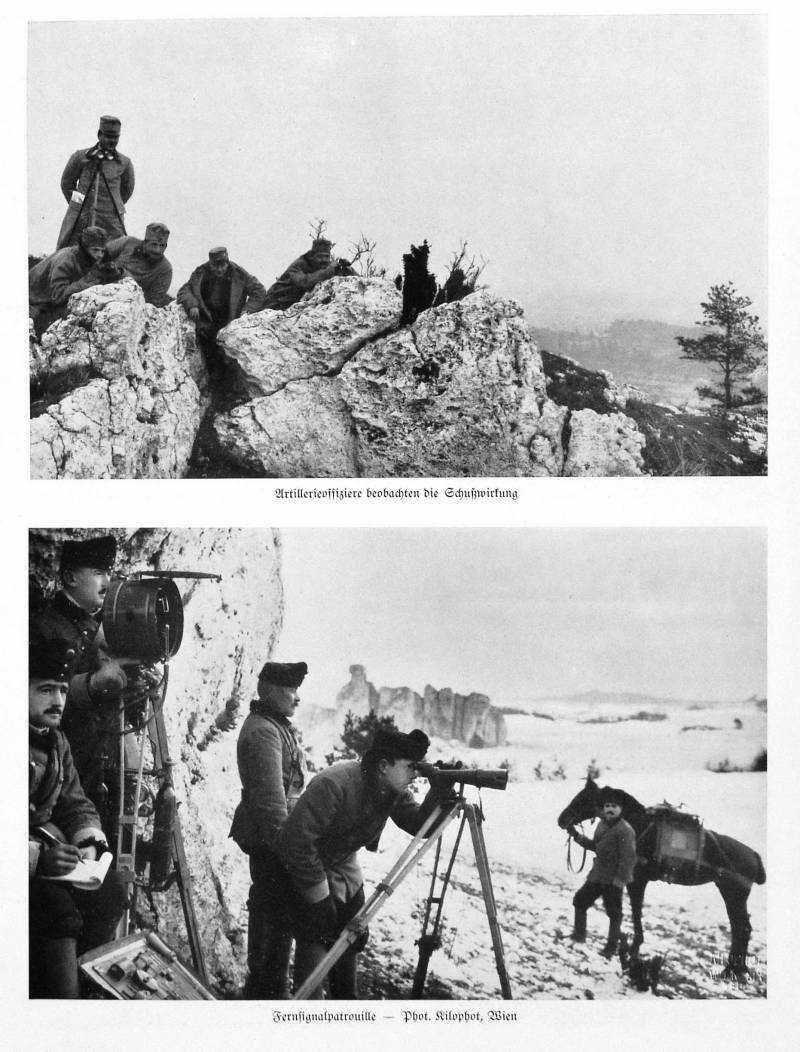
Information